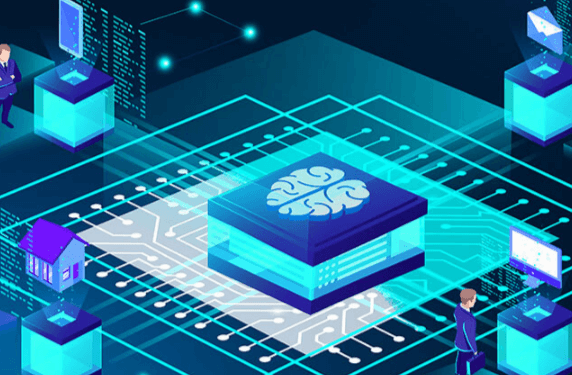What role does technology play in advancing global education, particularly in under-resourced areas?

Introduction
In today’s interconnected world, technology has emerged as a powerful catalyst for change, impacting various sectors, including education. The transformative power of technology is particularly significant in under-resourced areas where traditional educational resources are often scarce. This article explores the role of technology in advancing global education, focusing on its impact in these underserved regions.
Enhancing Educational Accessibility
One of the most significant contributions of technology to global education is enhancing accessibility. In many under-resourced areas, geographical barriers and a lack of infrastructure have historically limited access to quality education. However, technological advancements such as online learning platforms, mobile education apps, and digital classrooms have made education more accessible than ever before. These tools allow students in remote and rural areas to access educational content and resources that were previously out of reach.
Bridging the Digital Divide
The digital divide refers to the gap between individuals who have access to modern information and communication technology and those who do not. Bridging this divide is crucial for educational equity. Initiatives like One Laptop per Child and affordable internet solutions have played a significant role in providing underprivileged students with the necessary technological tools. By equipping students with laptops, tablets, and reliable internet connections, these programs ensure that no student is left behind due to a lack of technological resources.
Empowering Teachers with Digital Tools
Technology also empowers teachers by providing them with innovative tools and resources to enhance their teaching methods. Educational software, interactive whiteboards, and virtual reality tools enable educators to create engaging and interactive learning experiences. In under-resourced areas, where teacher training and professional development opportunities are limited, online training programs and digital teaching resources offer valuable support to educators, improving the overall quality of education.
Promoting Interactive and Personalized Learning
Traditional classroom settings often struggle to cater to the individual learning needs of each student. Technology addresses this challenge by promoting interactive and personalized learning experiences. Adaptive learning platforms use data and algorithms to tailor educational content to each student’s pace and learning style. This personalized approach helps students in under-resourced areas stay engaged and motivated, leading to better learning outcomes.
Supporting Lifelong Learning
The rapid pace of technological change demands that individuals continuously update their skills and knowledge. Technology supports lifelong learning by providing access to a vast array of online courses, webinars, and educational content. For students and adults in under-resourced areas, this means the opportunity to acquire new skills and knowledge, improving their employability and economic prospects.
Facilitating Global Collaboration and Cultural Exchange
Technology breaks down geographical barriers, allowing students from different parts of the world to connect and collaborate. This global collaboration fosters cultural exchange and broadens students’ perspectives. For under-resourced areas, participation in international educational programs and virtual exchanges can provide invaluable exposure to different cultures and ideas, enriching the educational experience.
Providing Access to Quality Educational Content
In many under-resourced areas, access to quality educational content is limited. Technology addresses this issue by providing access to a wealth of digital resources, including e-books, academic journals, and educational videos. Platforms like Khan Academy and Coursera offer free or affordable courses from top universities, ensuring that students in underserved regions can access high-quality education.
Improving Administrative Efficiency
Educational institutions in under-resourced areas often face administrative challenges due to limited resources and staff. Technology streamlines administrative processes, making them more efficient. School management software, digital attendance systems, and online grading tools reduce the administrative burden on educators, allowing them to focus more on teaching and supporting students.
Enhancing STEM Education
Science, Technology, Engineering, and Mathematics (STEM) education is crucial for preparing students for the future job market. However, under-resourced areas often lack the necessary infrastructure and resources for effective STEM education. Technology provides innovative solutions, such as virtual laboratories, online coding courses, and interactive science simulations, making STEM education more accessible and engaging for students in these regions.
Addressing Language Barriers
Language barriers can hinder educational progress, especially in areas with diverse linguistic backgrounds. Technology offers solutions such as language learning apps, translation tools, and multilingual educational content. These tools help bridge language gaps, enabling students to learn in their native languages while gaining proficiency in global languages like English.
Supporting Special Needs Education
Students with special needs often require tailored educational approaches and resources. Technology plays a vital role in supporting special needs education by providing assistive technologies, such as speech-to-text software, screen readers, and adaptive learning devices. These tools ensure that students with disabilities in under-resourced areas receive the support they need to succeed academically.
Encouraging Community and Parental Involvement
Parental and community involvement is essential for the success of educational initiatives. Technology facilitates communication and collaboration between schools, parents, and communities. Online portals, messaging apps, and social media platforms keep parents informed about their children’s progress and school activities, fostering a supportive learning environment.
Addressing Gender Disparities in Education
In many under-resourced areas, gender disparities in education persist, with girls often facing barriers to accessing quality education. Technology helps address these disparities by providing safe and flexible learning environments. Online education platforms and mobile learning apps offer girls the opportunity to continue their education from home, overcoming cultural and logistical barriers.
Ensuring Continuity of Education During Crises
Natural disasters, conflicts, and pandemics can disrupt education, particularly in under-resourced areas. Technology ensures the continuity of education during such crises by enabling remote learning. During the COVID-19 pandemic, for instance, many schools worldwide adopted online learning to keep students engaged and learning despite school closures.
Challenges and Solutions in Implementing Technology in Education
While technology offers numerous benefits for global education, implementing it in under-resourced areas comes with challenges. These include inadequate infrastructure, lack of digital literacy, and limited funding. However, innovative solutions such as solar-powered devices, community-based digital literacy programs, and public-private partnerships can help overcome these challenges and ensure the successful integration of technology in education.
Case Studies: Successful Integration of Technology in Under-Resourced Areas
Several case studies highlight the successful integration of technology in under-resourced areas. For example, the “Hole-in-the-Wall” project in India installed computers in public spaces, allowing children to learn through self-directed exploration. Another example is the Bridge International Academies in Africa, which use technology to deliver low-cost, high-quality education to students in underserved communities.
Future Trends in Educational Technology
The future of educational technology holds exciting possibilities, particularly for under-resourced areas. Emerging technologies such as artificial intelligence, augmented reality, and blockchain have the potential to further revolutionize education. These technologies can provide personalized learning experiences, enhance educational content, and ensure the security and transparency of educational records.
Conclusion
Technology plays a crucial role in advancing global education, particularly in under-resourced areas. By enhancing accessibility, promoting personalized learning, and supporting educators, technology helps bridge the educational gap and ensures that every student has the opportunity to receive a quality education. As technological advancements continue, the potential for further transforming education in underserved regions remains immense.
FAQs
What are some examples of technology enhancing education in under-resourced areas?
Examples include online learning platforms, mobile education apps, digital classrooms, and initiatives like One Laptop per Child.
How does technology help bridge the digital divide in education?
Technology provides affordable devices and internet access, ensuring that students in underprivileged areas have the necessary tools for learning.
What role does technology play in supporting special needs education?
Assistive technologies such as speech-to-text software, screen readers, and adaptive learning devices support students with disabilities.
How can technology address gender disparities in education?
Technology offers flexible learning environments through online platforms and mobile apps, enabling girls to continue their education despite cultural and logistical barriers.
What challenges are faced when implementing technology in under-resourced areas?
Challenges include inadequate infrastructure, lack of digital literacy, and limited funding, which can be addressed through innovative solutions like solar-powered devices and community-based programs.
What are future trends in educational technology for under-resourced areas?
Emerging technologies such as artificial intelligence, augmented reality, and blockchain promise to further revolutionize education by providing personalized learning experiences and enhancing content security.




